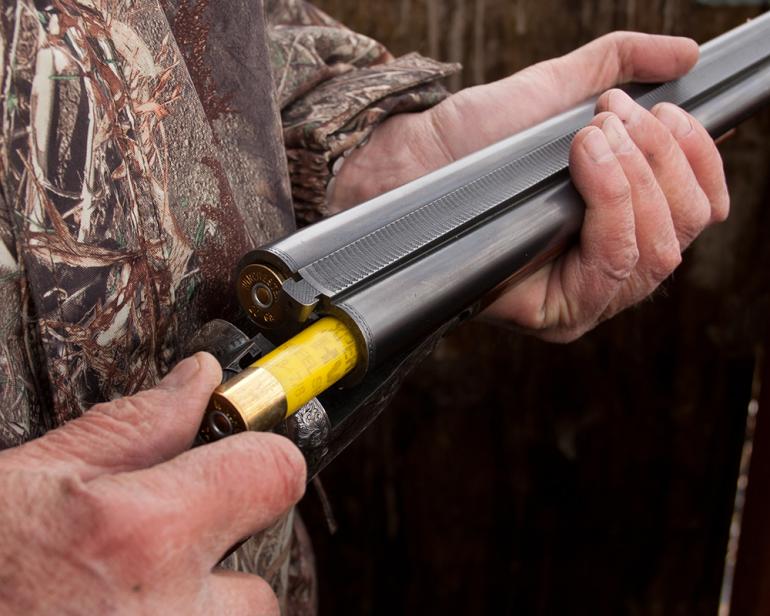Shotgun Start
Selecting a scatter gun.
Shotguns come in three basic forms. Each has its advantages, disadvantages, and adherents, some of whose opinions can be remarkably passionate about a subject that is little more than some pieces of steel attached to a piece of wood. No wonder many novice hunters feel so confused when they enter a sporting-goods store to outfit themselves for their first wing-shooting season. Here’s a quick rundown, based on over 60 years of experience with all three.
Pumps
Pump shotguns occupy a middle ground between auto-loaders’ modern efficiency and the traditions and intangibles of a good double. Like auto-loaders, pumps have a single barrel and a magazine that will usually hold four shells in addition to the one that’s in the chamber and ready to fire. Now, an important note on magazine capacity that applies equally to pumps and auto-loaders. Federal regulations, which apply to migratory birds like waterfowl, prohibit hunting with a shotgun capable of holding more than two rounds in the magazine in addition to one in the chamber. Since these restrictions don’t apply to upland game like grouse and pheasants, most pumps and automatics (or simply autos, as they are often known) are built to hold four shells in the magazine. When hunting waterfowl, it is up to the hunter to place a “plug” in the magazine to reduce the capacity. This is easily done by the hunter, a sporting goods store, or a gunsmith, but it is not enough simply to act on good faith and hunt with no more than three rounds total in the firearm. Game wardens check in the field, and if they can slide a third round into the magazine you can receive a citation.
In contrast to an auto, a pump requires the hunter to eject the spent shell from the chamber after a shot and manually replace it with a second round from the magazine, by using a slide mechanism on the fore-stock. This may sound cumbersome, but an experienced hunter can work a pump’s slide faster than most people can aim and shoot.
Automatics
Pumps and autos are similar in all respects save one. Instead of relying on a manual pump to reload, an auto does that automatically (duh), by harnessing the energy of the fired shell’s recoil and using it to eject the spent round and advance the next one from the magazine. Adherents claim that this leads to a quicker second shot, although pump enthusiasts may dispute this claim. It does reduce the effect of recoil on the hunter, however.
Please note that an auto-loading shotgun is not an automatic weapon! The trigger must still be pulled once for each shot, a requirement that takes it out of the machine-gun category.
Doubles
Full disclosure—despite my experience with the alternatives, I love double-barreled shotguns and hunt with them almost exclusively, for reasons I’ll try to articulate. But first, an acknowledgement of their disadvantages. In contrast to pumps and autos, once you have loaded the barrels, you aren’t going to get more than two shots out of it until you break open the action and load it again. A pump or auto may offer a third shot at a flock of mallards or a fourth and fifth shot on a staggered rise of Huns or sharptails. My advice is to get over it, as I did over 50 years ago. If I can’t get the job done with two shots, it’s time to go home.
Doubles have a reputation for expense, and that’s true on the high end. Those so inclined can spend more on a vintage “best” double than I spent on my first house. However, manufacturers such as Browning now offer excellent entry-level doubles at reasonable prices, and they’ll kill birds just as dead as those at the high end of the price range.
A double-barrel fitted with a selective safety offers an advantage that I find better honored in the breech than the observance. Moving the safety from one side to the other while mounting the gun allows the hunter to select the barrel with the tighter choke prior to pulling the trigger, as one might do on a longer shot at a tough bird like a goose. I’ve never found the theoretical advantage worth the distraction.
So, why do I choose doubles? Chalk it up to a combination of balance, simplicity, tradition, and style. That’s as far as I can take the discussion here. Buy me a beer at a Bozeman micro-brew and I’ll go on all night.













